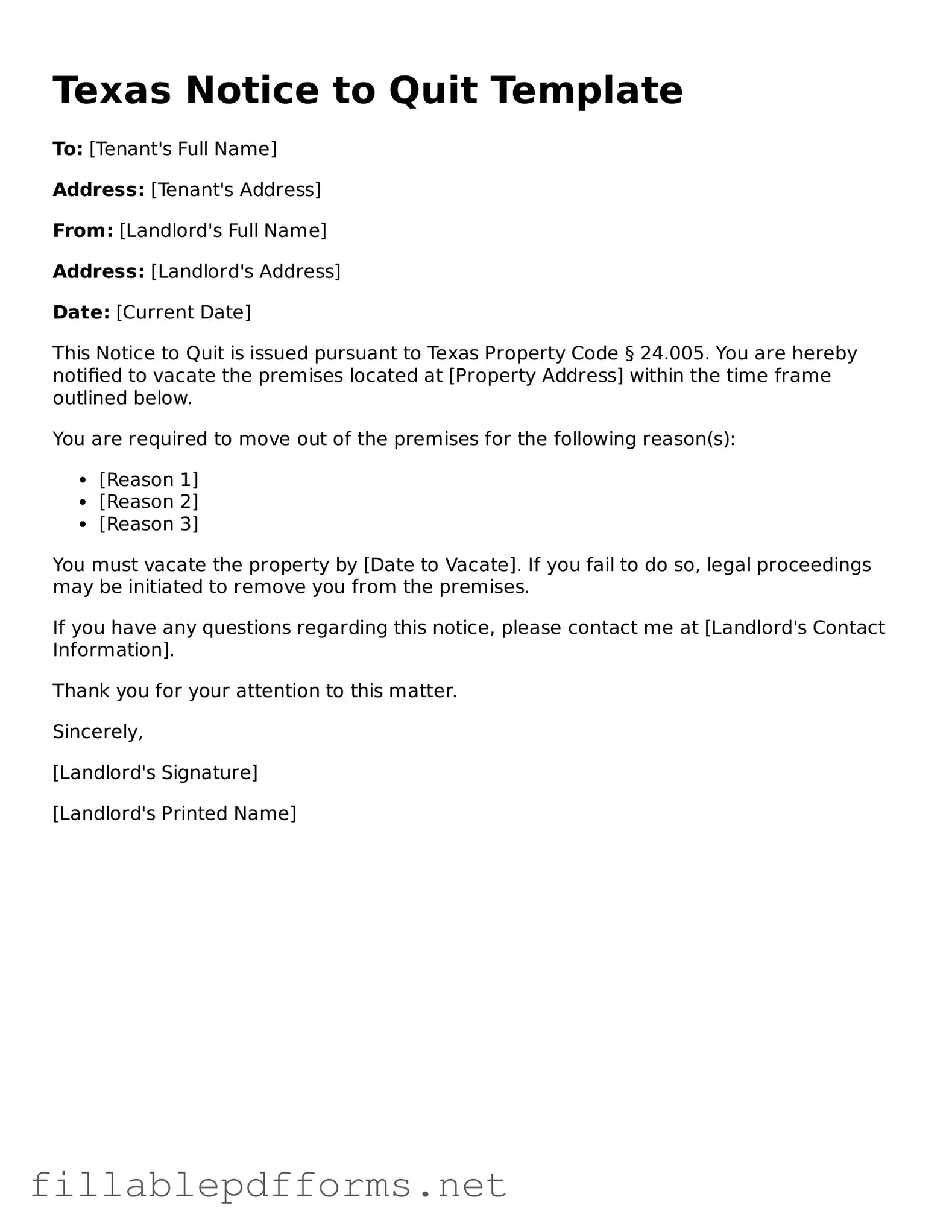In Texas, the Notice to Quit form plays a crucial role in the landlord-tenant relationship, particularly when it comes to addressing issues of lease violations or unpaid rent. This document serves as a formal notification to tenants that they must vacate the rental property, typically due to failure to comply with the terms of their lease agreement. Understanding the specific requirements and implications of this form is essential for both landlords and tenants. For landlords, issuing a Notice to Quit is often the first step in the eviction process, setting a legal foundation for further action if the tenant does not respond appropriately. On the other hand, tenants receiving this notice should take it seriously, as it indicates that they may be at risk of losing their housing. The form must include essential details such as the reason for the notice, the timeframe in which the tenant must vacate, and the address of the rental property. Familiarity with this form can help both parties navigate their rights and responsibilities, ensuring a smoother resolution to disputes that may arise during the tenancy.
